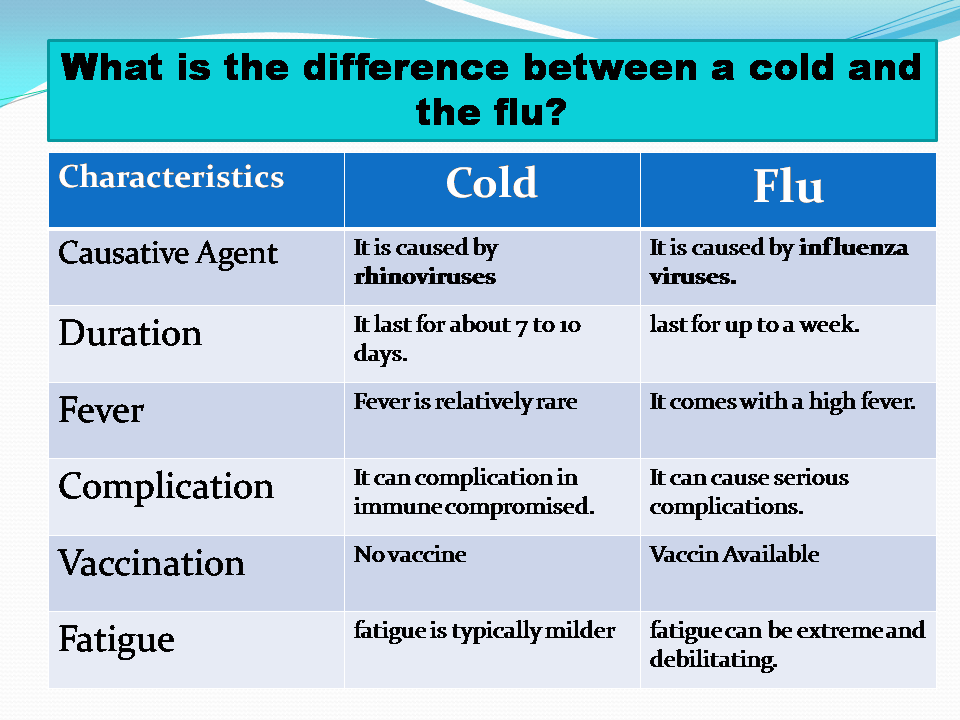Here you will understand “what is the difference between a cold and the flu”.

As the seasons change and temperatures drop, many of us find ourselves reaching for tissues and cough drops. It can be cold or flu. While both illnesses share similar symptoms, they are caused by different viruses and have distinct characteristics.
Understanding the differences between a cold and the flu can help you manage your symptoms and seek appropriate treatment. Here, you understand the key distinctions between these two viral infections.
Causative Agent Difference
One of the primary differences between a cold and the flu lies in the viruses responsible for each illness. The common cold is most commonly caused by rhinoviruses, although other viruses like coronaviruses and adenoviruses can also lead to cold-like symptoms.
In contrast, the flu, or influenza, is caused by influenza viruses, which are divided into several subtypes such as influenza A, B, and C.
Onset and Duration Difference
Cold symptoms typically develop gradually and may take a few days to fully manifest after exposure to the virus. They tend to be milder in intensity and include a runny or stuffy nose, sneezing, sore throat, and a mild cough. Its symptoms usually last for about 7 to 10 days.
On the other hand, the flu often strikes suddenly and more severely. Symptoms can include high fever, chills, fatigue, muscle and joint aches, headaches, a dry cough, and a sore throat. The flu usually lasts for a shorter duration, with symptoms improving within a week, but fatigue and weakness may persist for a couple of weeks.
Fever
Fever is a common symptom of both colds and the flu, but its prevalence and severity can help distinguish between the two.
In colds, fever is relatively rare and, when present, tends to be low-grade. In contrast, the flu often comes with a high fever that can persist for several days.
Fatigue
While fatigue can occur with both illnesses, it is generally more pronounced in cases of the flu. Flu-related fatigue can be extreme and debilitating, often making it difficult for individuals to carry out their daily activities. Cold-related fatigue is typically milder and less persistent.
Complications
Both colds and the flu can lead to complications, especially in vulnerable populations such as young children, the elderly, and individuals with weakened immune systems.
However, the flu is more likely to result in serious complications, including pneumonia, bronchitis, and sinus infections. These complications can be life-threatening in some cases.
Vaccination
One of the most effective ways to prevent the flu is through annual vaccination. Influenza vaccines are available and recommended for most age groups, and they can significantly reduce the risk of contracting the flu and its severity.
Unfortunately, there is no specific vaccine for the common cold due to the numerous viruses that can cause it.
KEEP IT UP NICE SIR